- Introduction to Drumming and Stress Relief
- The Science Behind Drumming and Stress Relief
- Historical Use of Drumming for Healing
- Benefits of Drumming for Mental Health
- How Drumming Helps in Stress Management
- Step-by-Step Guide to Drumming for Stress Relief
- Personal Experiences: Drumming as a Form of Therapy
- Drumming Techniques for Maximum Stress Relief
- Choosing the Right Drum and Equipment for Stress Relief
- Tips for Incorporating Drumming into Your Daily Routine
- Conclusion: Embrace the Rhythm of Life
Introduction to Drumming and Stress Relief
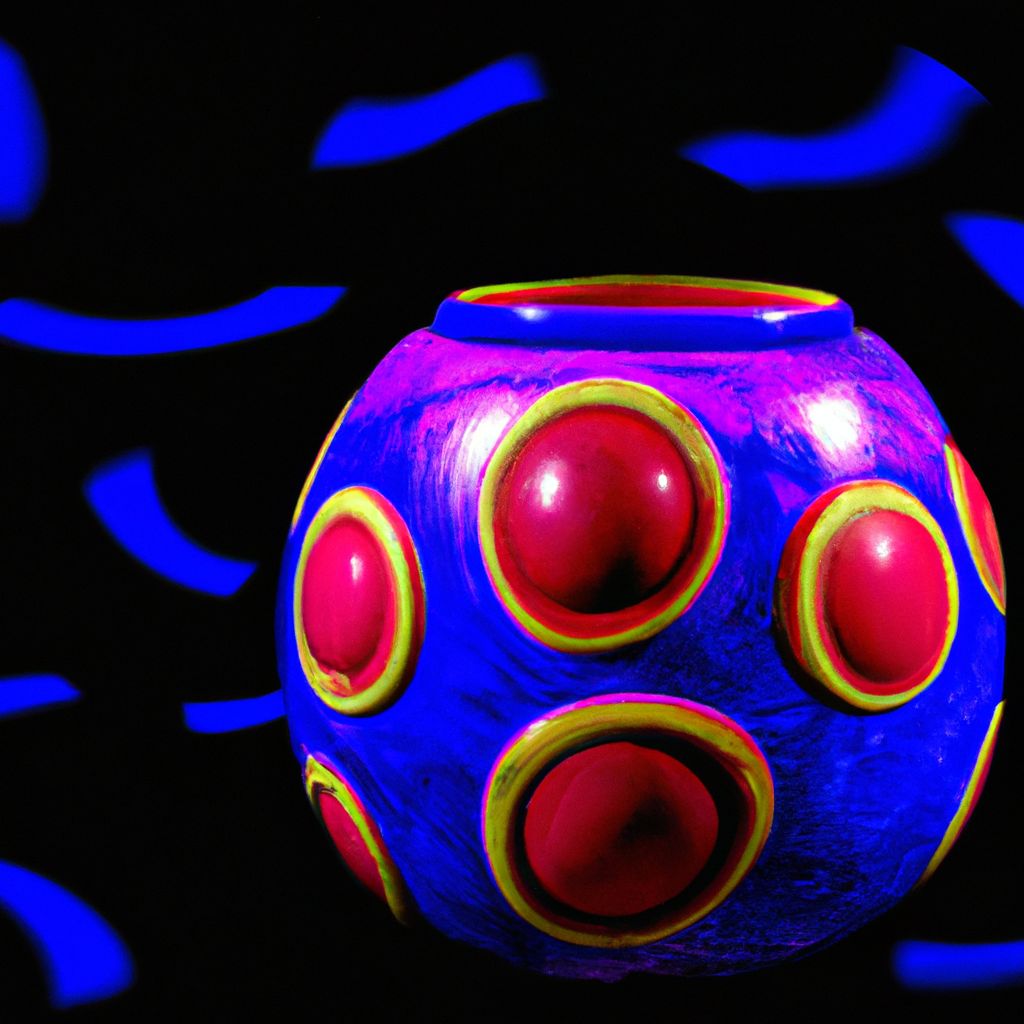
Modern life is characterized by a constant rush, pressure, and an overwhelming amount of information. This can often lead to stress, which has grave implications for our mental and physical health. Amidst this chaos, many people are turning towards ancient practices for solace. One such practice is drumming, an art form that is as old as humanity itself. It has been used for centuries by various cultures around the world for rituals, celebrations, and healing purposes. Today, the therapeutic benefits of drumming for stress relief are being recognized and adopted globally.
Drumming is a form of percussion music that involves the rhythmic beating of a stretched membrane, producing a wide range of sounds. It is a powerful medium that can stimulate the mind, body, and spirit. Recent studies have suggested that drumming can serve as an effective stress relief tool, providing both physical and emotional benefits.
This article explores the intersection of drumming and stress relief, diving deep into the rhythm of life. It discusses the scientific evidence supporting the benefits of drumming, how to incorporate drumming into your routine, and the transformative power of this practice.
The Science Behind Drumming and Stress Relief

Drumming has a profound effect on the human body and mind, and modern science is now able to explain why. The act of drumming can induce a state of deep relaxation, reduce stress, and improve mood. This is largely attributed to the rhythmic pattern and vibrations produced during drumming, which can synchronize the brain's activity.
According to a study published in the Journal of Music Therapy, group drumming releases endorphins, the body's natural painkillers, and can increase pain thresholds. This release of endorphins helps reduce feelings of anxiety and stress, leading to an overall sense of well-being.
Another research published in the Journal of Cardiovascular Medicine found that drumming can lower blood pressure, heart rate, and stress hormones. The repetitive act of striking the drum can divert the mind from stressors, helping reduce the physiological signs of stress.
Furthermore, drumming is also linked with increased alpha brainwave activity, which is associated with feelings of calmness and content, as per a study in the American Journal of Public Health.
It's clear that the rhythmic beats of drumming can have a profound and positive impact on our stress levels, confirming the ancient wisdom of many cultures that have long used drumming for healing and relaxation purposes.
Historical Use of Drumming for Healing

Drumming is not a new phenomenon; it has been in existence for thousands of years. The use of drumming for healing and spiritual purposes can be traced back to ancient civilizations across Africa, Asia, the Americas, and Australia. These cultures recognized the transformative and healing power of rhythmic sound and incorporated drumming into their rituals and ceremonies.
In African cultures, for example, drumming has been an integral part of social and religious life. The Djembe, an African drum, was traditionally used in healing ceremonies, rites of passage, and community gatherings. The rhythmic beats were believed to connect individuals with the spiritual realm and provide physical healing.
The indigenous cultures of the Americas also utilized drumming in their healing rituals. The drum was considered a sacred instrument, and its sound was believed to carry prayers to the divine. The rhythmic patterns were used to induce trance states, where healing and transformation could occur.
In many Asian cultures, drumming has been used in meditation and religious ceremonies. The rhythmic beats were used to facilitate a deeper connection to the self and the universe, promoting spiritual growth and healing.
These historical uses of drumming for healing underline the timeless connection between rhythm, health, and well-being. They lend credence to the modern-day use of drumming as a therapeutic tool for stress relief.
Benefits of Drumming for Mental Health
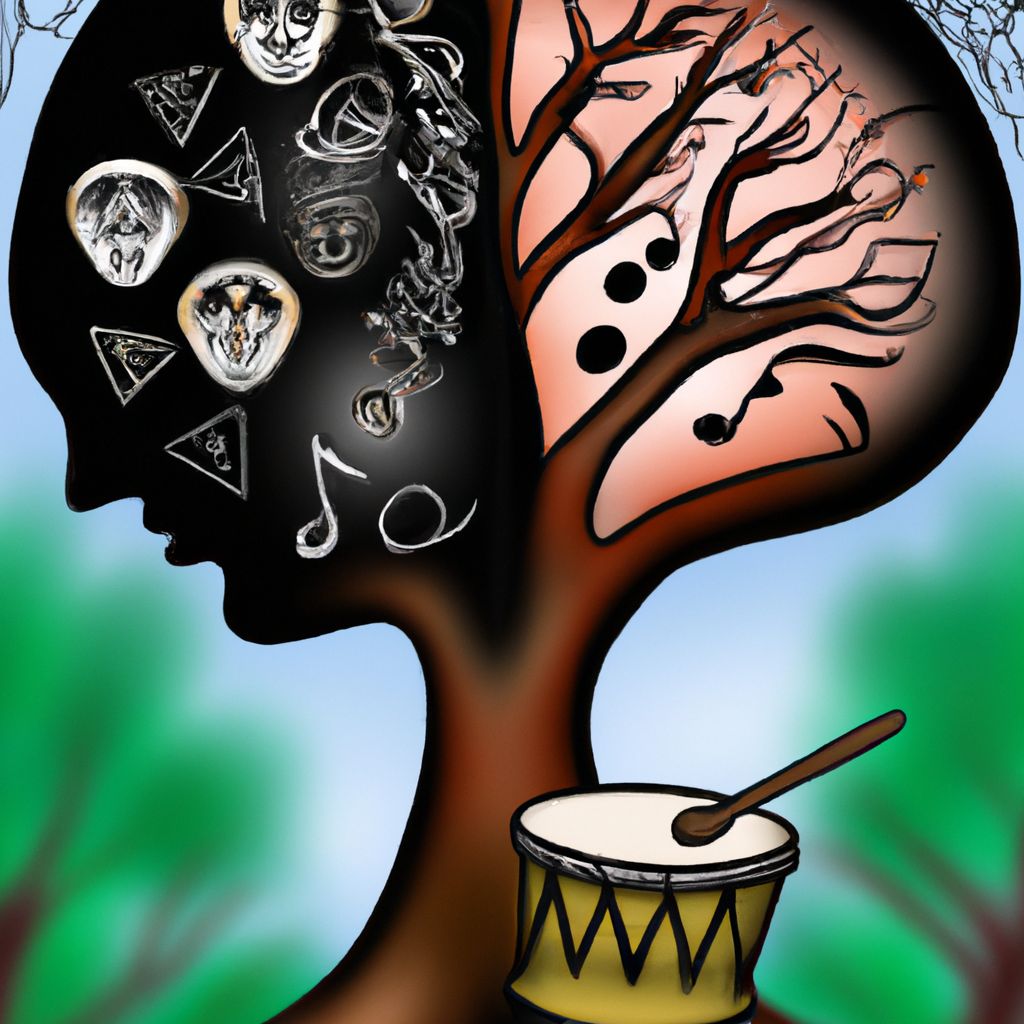
Drumming has been recognized as a potent tool for promoting mental health and well-being. The rhythmic beats and vibrations produced by drumming can have a profound impact on the human psyche, fostering a sense of peace and relaxation. Here are some key benefits of drumming for mental health:
1. Stress reduction: As mentioned earlier, drumming can induce a state of deep relaxation. It helps decrease tension, anxiety, and stress, promoting an overall sense of well-being. The repetitive and rhythmic nature of drumming can serve as a form of mindfulness practice, aiding in stress management.
2. Mood enhancement: Drumming is a fun, engaging activity that can boost mood and increase feelings of happiness. A study published in the journal 'Evidence-Based Complementary and Alternative Medicine' found that active drumming provides a natural mood elevation, helping alleviate symptoms of depression and anxiety.
3. Boosts brain function: Drumming can improve cognitive function and stimulate different areas of the brain. Research published in the journal 'Neuroscience Letters' suggests that drumming increases brainwave synchronization, which can enhance concentration, focus, and creative thinking.
4. Promotes mindfulness: Drumming requires concentration and focus, encouraging a sense of presence and mindfulness. This can help quiet the mind, reduce negative thought patterns, and promote mental clarity.
5. Enhances self-expression: Drumming provides a non-verbal medium for expressing emotions. It can serve as a form of self-expression, allowing individuals to channel their feelings and emotions in a positive, constructive manner.
Given these benefits, it's clear that drumming can be a valuable addition to one's mental health toolkit, offering a natural, enjoyable way to boost mental well-being.
How Drumming Helps in Stress Management
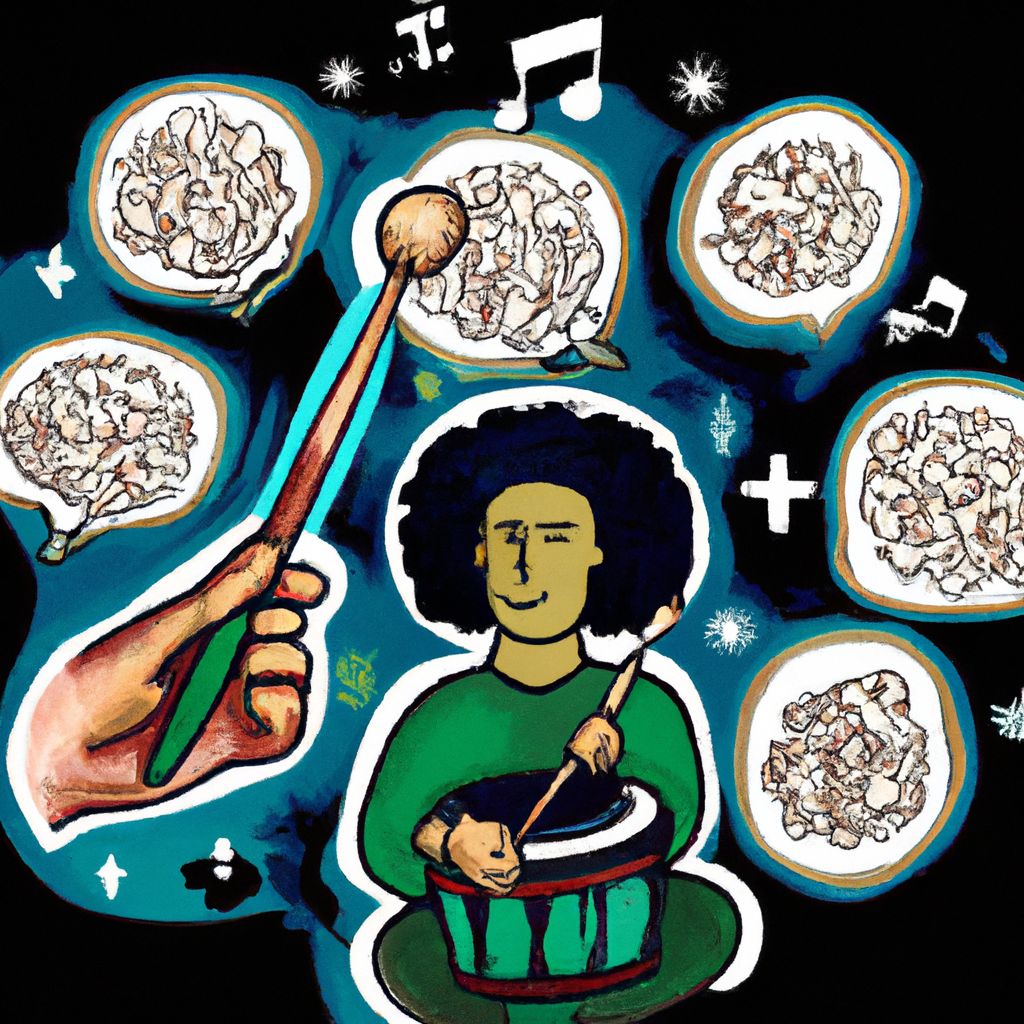
Stress is a pervasive aspect of modern life, and effective stress management is crucial for maintaining overall health and well-being. Drumming, with its rhythmic beats and vibrations, offers a unique approach to stress management. Here's how:
1. Induces Relaxation: Drumming can help induce a state of deep relaxation. The rhythmic patterns can help slow down mental activity and promote a relaxed state of mind. This can help ease anxiety and tension, leading to a reduction in stress levels.
2. Promotes Mindfulness: The act of drumming requires concentration and presence, promoting mindfulness. This can help divert attention away from stressors and foster a sense of calm and tranquility.
3. Enhances Mood: Drumming can serve as a powerful mood enhancer. The physical act of drumming releases endorphins, the body's natural feel-good hormones, which can boost mood and create a sense of happiness and well-being.
4. Provides a Creative Outlet: Drumming allows for creative expression, helping individuals channel their stress in a positive, constructive manner. This can provide a sense of accomplishment and satisfaction, further reducing stress levels.
5. Fosters Social Connection: Group drumming sessions can foster a sense of community and belonging. This social connection can provide emotional support and help combat feelings of isolation and loneliness, which are often linked with stress.
By integrating drumming into your stress management routine, you can tap into its therapeutic benefits, providing a natural, engaging, and effective way to cope with stress.
Step-by-Step Guide to Drumming for Stress Relief
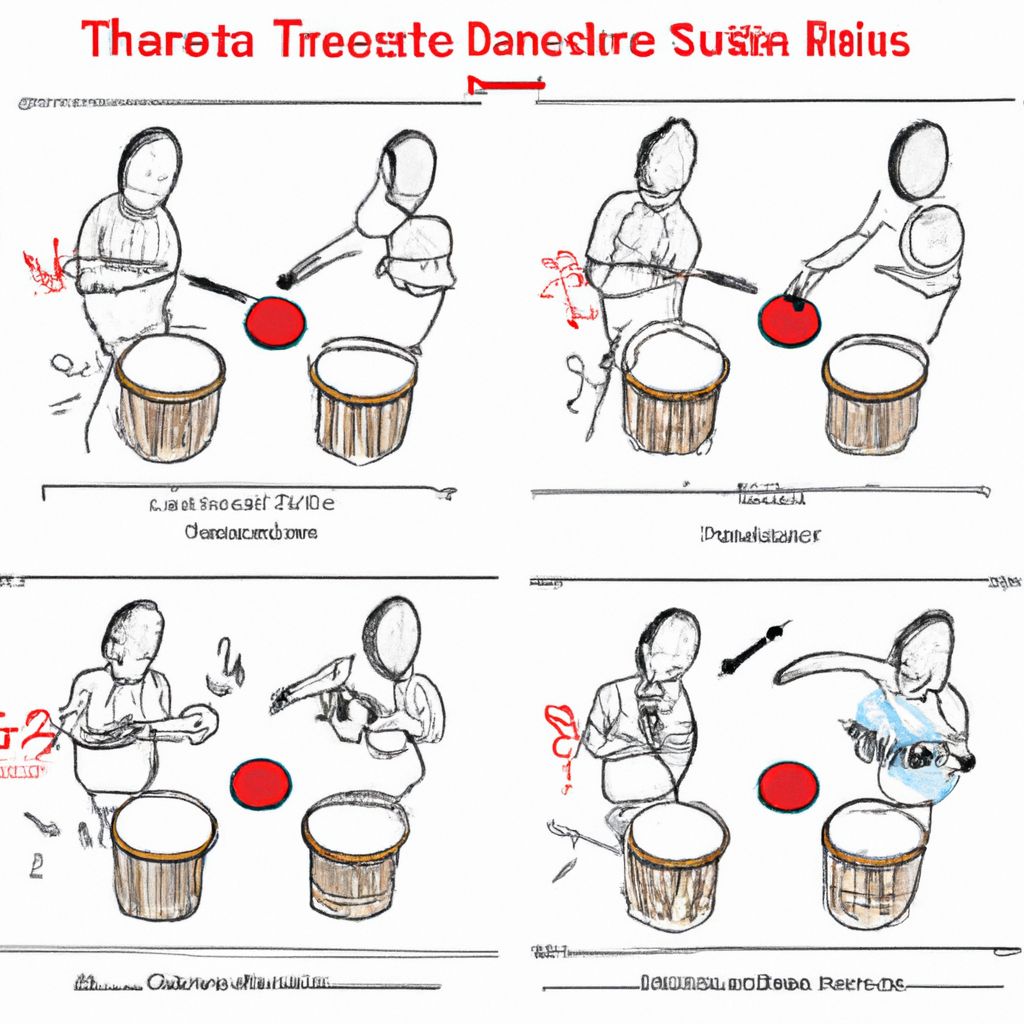
If you're new to drumming or are unsure of how to get started, here's a step-by-step guide to drumming for stress relief:
1. Choose Your Drum: Your first step is to choose a drum. There are many types of drums available, ranging from traditional African Djembes to modern electronic drum sets. Choose one that resonates with you and fits your budget.
2. Learn Basic Beats: Start by learning some basic beats. There are many online tutorials and classes available that can guide you. Practice these beats until you feel comfortable.
3. Establish a Routine: Just like any other stress management technique, consistency is key. Try to incorporate drumming into your daily routine. Even a few minutes each day can make a difference.
4. Engage in Group Drumming: Participating in group drumming sessions can provide additional benefits, including social connection and a sense of community. Look for local drum circles or classes in your area.
5. Explore and Experiment: Once you're comfortable with the basics, don't be afraid to explore and experiment. Drumming is a form of self-expression, so let your creativity flow.
6. Pair with Mindfulness: Try pairing your drumming practice with mindfulness. Pay attention to the sound of the drum, the feel of the drumstick in your hand, and the rhythm of your beats. This can help enhance the stress-relieving benefits of drumming.
Remember, drumming for stress relief is about the journey, not the destination. Don't worry about being perfect. The goal is to immerse yourself in the rhythm and let the drumming soothe your mind and body.
Personal Experiences: Drumming as a Form of Therapy

Drumming has been used as a form of therapy by many individuals around the world, each with their unique experiences and outcomes. Here are a few personal experiences that highlight the transformative power of drumming:
1. Overcoming Anxiety: Jane, a businesswoman from New York, turned to drumming when her anxiety became overwhelming. She recalls, "The moment I started to drum, I could feel the tension leaving my body. The rhythmic beats calmed my mind and helped me manage my anxiety in a way no other therapy did."
2. Healing from Trauma: David, a war veteran, used drumming to help heal from his traumatic experiences. He shared, "Drumming helped me reconnect with myself. The rhythm and vibrations brought a sense of peace and grounding that I hadn't felt in years."
3. Enhancing Mindfulness: Lisa, a yoga teacher from California, incorporated drumming into her mindfulness practice. She said, "Drumming enhances my mindfulness practice. The beats help me stay present and focused, taking my meditation to a new level."
4. Boosting Mood: Tom, a student from Canada, started drumming to cope with his depression. He reports, "Drumming is like an instant mood booster for me. It's fun, engaging, and helps me express my emotions in a positive way."
These personal experiences demonstrate the therapeutic power of drumming. Whether it's managing anxiety, healing from trauma, enhancing mindfulness, or boosting mood, drumming can serve as an effective tool for promoting mental health and well-being.
Drumming Techniques for Maximum Stress Relief
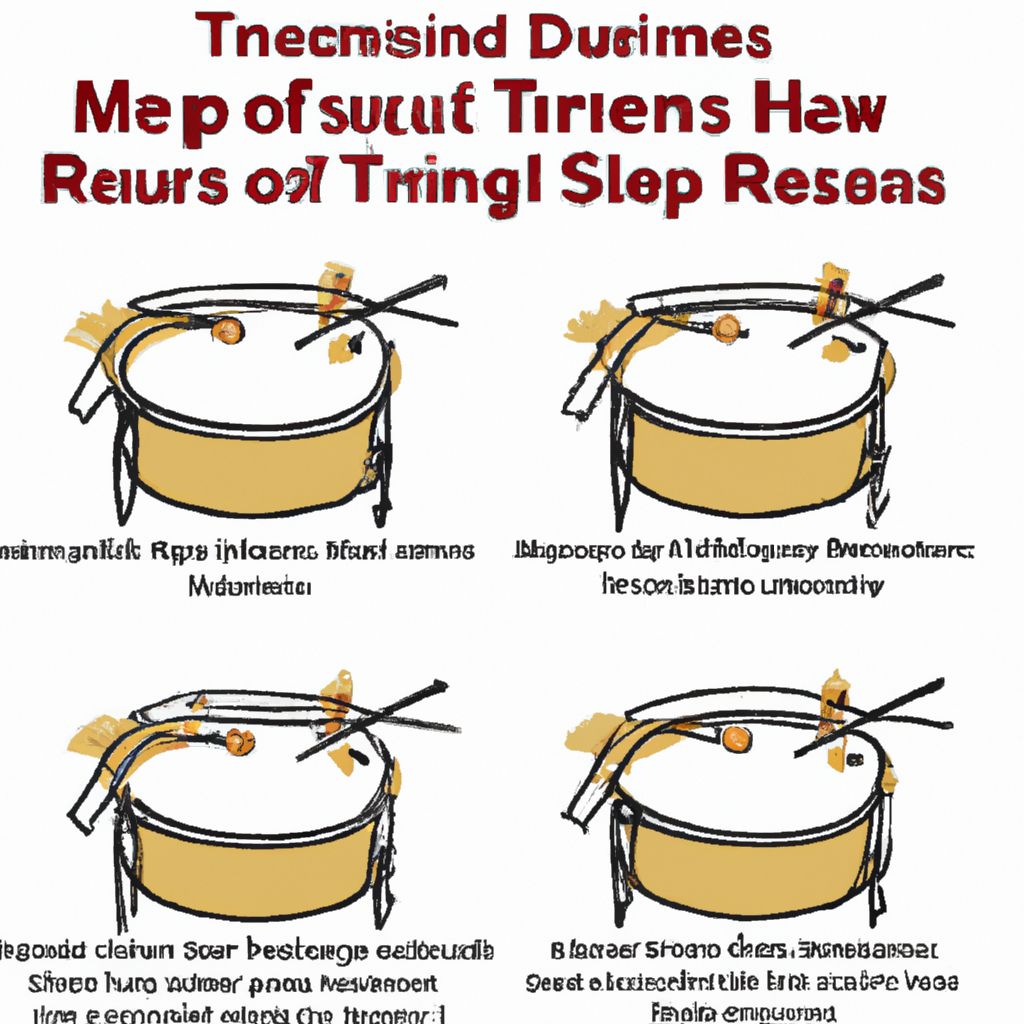
While any form of drumming can have stress-relieving benefits, certain techniques can maximize its therapeutic effects. Here are a few drumming techniques specifically designed for stress relief:
1. Rhythmic Drumming: This technique focuses on creating a consistent, repetitive beat. The predictability of the rhythm can help calm the mind and induce a state of relaxation.
2. Mindful Drumming: Mindful drumming involves focusing your attention on the act of drumming, paying attention to the sound of the drum, the feeling of the drumsticks in your hands, and the rhythm of your beats. This can help promote mindfulness and reduce stress.
3. Expressive Drumming: This technique involves using the drum as a form of self-expression. You can play the drum in response to your emotions, allowing you to express your feelings in a non-verbal way. This can be particularly beneficial for reducing stress and anxiety.
4. Group Drumming: Participating in a drum circle or group drumming session can provide additional stress-relieving benefits. The sense of community and shared rhythm can foster a sense of connection and belonging, which can help reduce stress.
Remember, the goal of drumming for stress relief is not to become a master drummer, but to use the drum as a tool for relaxation and self-expression. So, don’t worry about getting the techniques perfect. Instead, focus on the rhythm, immerse yourself in the experience, and let the drumming soothe your mind and body.
Choosing the Right Drum and Equipment for Stress Relief
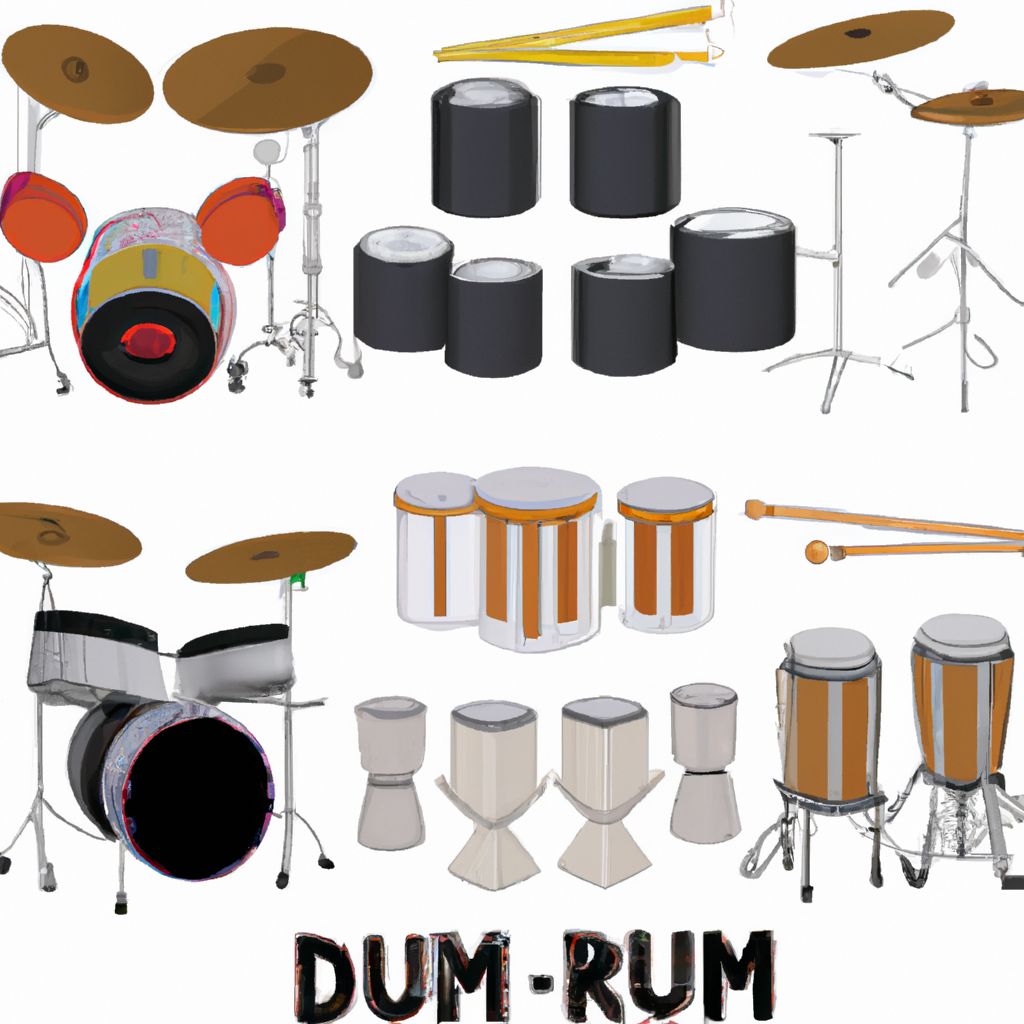
Choosing the right drum and equipment is an important step in your drumming journey. Here's a guide to help you make the right choice:
1. Type of Drum: There are many types of drums available, each with its own unique sound and feel. Djembes, Congas, and Bongos are popular choices for therapeutic drumming due to their rich, resonant sounds and tactile nature. Electronic drum sets can also be a good choice if you prefer a modern, versatile instrument.
2. Drum Size: The size of the drum can affect the sound it produces. Larger drums typically produce deeper, more resonant sounds, while smaller drums tend to have a sharper, more pronounced sound. Choose a size that feels comfortable and resonates with you.
3. Drumsticks: Drumsticks come in various sizes and materials. Heavier sticks can produce louder, more resonant sounds, while lighter sticks can provide more control and subtlety. Choose a pair that feels comfortable in your hands.
4. Drum Head: The drum head, or the surface you strike, can be made from various materials, including animal skin, synthetic materials, or metal. Each material produces a different sound and feel. Animal skin heads produce a warm, natural sound, while synthetic heads are more durable and weather-resistant.
5. Budget: The cost of drums can vary widely, depending on the type, size, and brand. Set a budget that you're comfortable with, and remember that while higher-priced drums can offer better quality and durability, even a modestly priced drum can provide stress-relieving benefits.
Remember, the best drum for you is the one that feels right and resonates with you. Take the time to explore different options and choose a drum that aligns with your needs, preferences, and budget.
Tips for Incorporating Drumming into Your Daily Routine

Incorporating drumming into your daily routine can enhance its stress-relieving benefits. Here are some tips to help you make drumming a part of your daily life:
1. Set Aside Regular Drumming Time: Make drumming a part of your daily schedule. Even a few minutes of drumming each day can have a positive impact on your stress levels.
2. Create a Drumming Space: Designate a specific space in your home for drumming. This could be a corner of your living room, your garage, or even your backyard. Having a dedicated space can help create a sense of ritual and make it easier to incorporate drumming into your routine.
3. Combine Drumming with Other Activities: Drumming can be combined with other activities such as mindfulness, meditation, or yoga. This can enhance the benefits of both activities and add a new dimension to your stress relief routine.
4. Join a Drumming Group: Joining a drumming group or participating in a drumming circle can provide motivation and social connection. It can also expose you to new rhythms and techniques.
5. Be Patient: Learning to drum takes time and practice. Don’t be discouraged if you don’t master it immediately. Remember, the goal is not perfection, but relaxation and stress relief.
By incorporating drumming into your daily life, you can tap into its therapeutic potential and create a natural, enjoyable stress management routine.
Conclusion: Embrace the Rhythm of Life

In conclusion, drumming is a powerful tool for stress relief. The rhythmic beats and vibrations can have a profound effect on our mind and body, inducing relaxation, boosting mood, enhancing brain function, and promoting mindfulness. The ancient wisdom of drumming, now backed by modern science, offers a unique approach to managing stress.
Whether you're a seasoned drummer or a complete beginner, embracing the rhythm of life can provide a sense of solace and tranquility in our fast-paced world. By incorporating drumming into your daily routine, you can tap into its therapeutic potential and create a natural, enjoyable stress management routine.
So, pick up a drum, feel the rhythm, and let the drumming soothe your mind and body. Embrace the rhythm of life, and let it guide you towards a state of deep relaxation and well-being.


